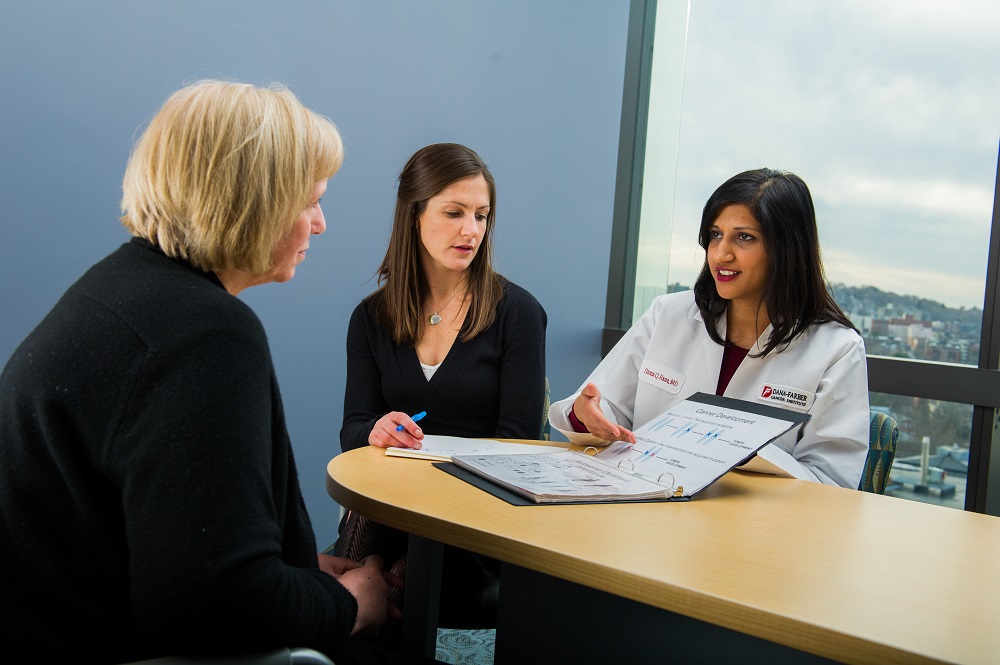Women born with mutations in the genes BRCA1 or BRCA2 have an increased risk of developing breast and ovarian cancer, but the degree of increase depends on a variety of factors.

Not all mutations within these genes raise the risk equally. A study published earlier this year tracked breast and ovarian cancer occurrences over a 75-year period in 31,000 women who had inherited mutations BRCA1 or BRCA2. The researchers found that mutations at either end of the BRCA1 gene increased the risk of breast cancer more than the risk of ovarian cancer. A group of mutations that occur in the middle portion of the gene, by contrast, raised ovarian cancer risk more than breast cancer risk.
The investigators also found that women who inherit a mutation anywhere in the BRCA2 gene had an 11 percent chance of developing ovarian cancer by age 70. But if the mutation didn’t alter the length of the protein derived from BRCA2, the risk of ovarian cancer was only 3 percent – still substantially higher than the average women’s risk, but much less than that associated with other BRCA2 mutations.
Environment and lifestyle factors also can influence breast and ovarian cancer development in women with BRCA1 or 2 mutations, notes Daniel Morganstern, MD, of the Center for Cancer Genetics and Prevention and the Susan F. Smith Center for Women’s Cancers at Dana-Farber. Research suggests that obesity, physical inactivity, and high alcohol intake, which raise the risk of breast and ovarian cancer in women generally, also do so in women who carry inherited BRCA1 or 2 mutations. Investigators at Dana-Farber are tracking the links between environment, heredity, and cancer in a study known as Project SEARCH.
Information, in the form of genetic counseling, can also play a powerful role in whether women with BRCA mutations develop breast or ovarian cancer. Research has shown women who learn they carry BRCA1 or 2 mutations before developing cancer – and take action such as undergoing more frequent cancer screenings or preventive surgery – can lower their breast and ovarian cancer risk significantly. Genetic counselors, working closely with physicians, can help women understand their risks and the stage of life when surgery or medication to reduce cancer risk should be considered.
In recent years, scientists have identified a number of inherited mutations that raise breast cancer risk, but not as highly as BRCA1 or 2 mutations do, which may explain patterns of breast cancer in families who have tested negative for BRCA1 and 2 mutations. In some cases, testing for these lesser-risk genes may be helpful.
“As we learn more about how specific mutations, environmental factors, and lifestyle affect cancer risk, we’ll be in a position to give women with BRCA1 or 2 mutations an individualized assessment of their likelihood of developing breast or ovarian cancer,” Morganstern said. “That, in turn, will lead to more individualized guidance and treatment.”

Lynch Syndrome 11 (MSH2 mutations) has also been the subject of research regarding a possible link between Lynch Syndrome mutation carriers and breast cancers.
Specific inherited mutations in BRCA1 and BRCA2 increase the risk of female breast and ovarian cancers, and they have been associated with increased risks of several additional types of cancer. Together, BRCA1 and BRCA2 mutations account for about 20 to 25 percent of hereditary breast cancers (1) and about 5 to 10 percent of all breast cancers (2). In addition, mutations in BRCA1 and BRCA2 account for around 15 percent of ovarian cancers overall (3). Breast and ovarian cancers associated with BRCA1 and BRCA2 mutations tend to develop at younger ages than their nonhereditary counterparts.
A harmful BRCA1 or BRCA2 mutation can be inherited from a person’s mother or father. Each child of a parent who carries a mutation in one of these genes has a 50 percent chance (or 1 chance in 2) of inheriting the mutation. The effects of mutations in BRCA1 and BRCA2 are seen even when a person’s second copy of the gene is normal.